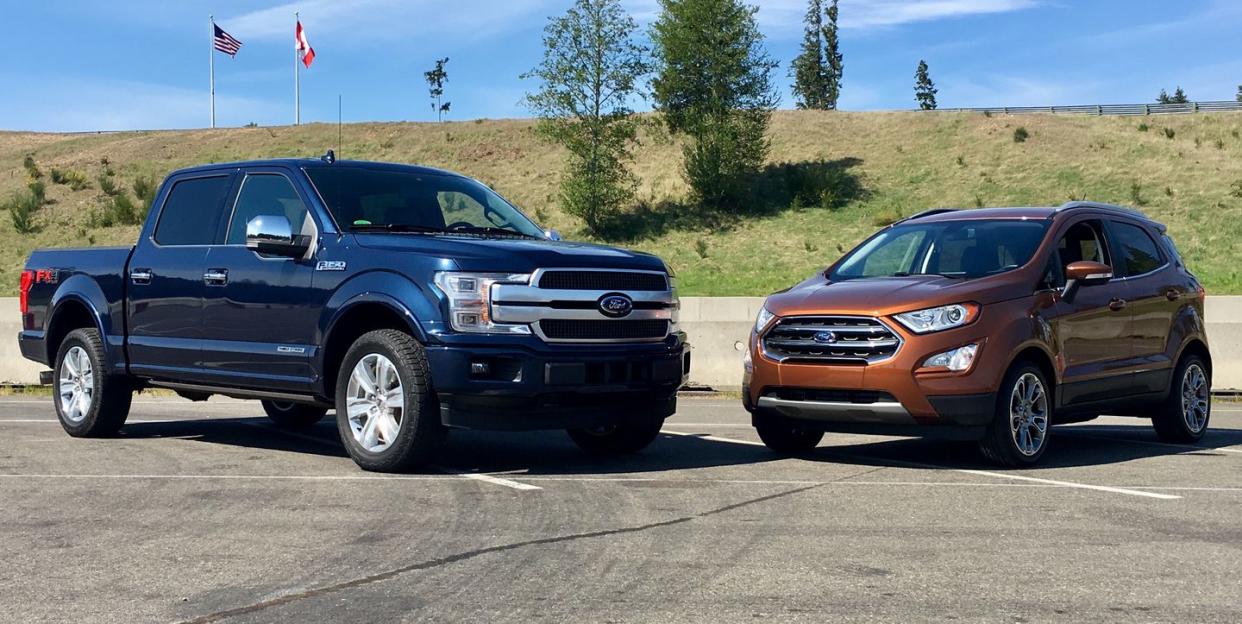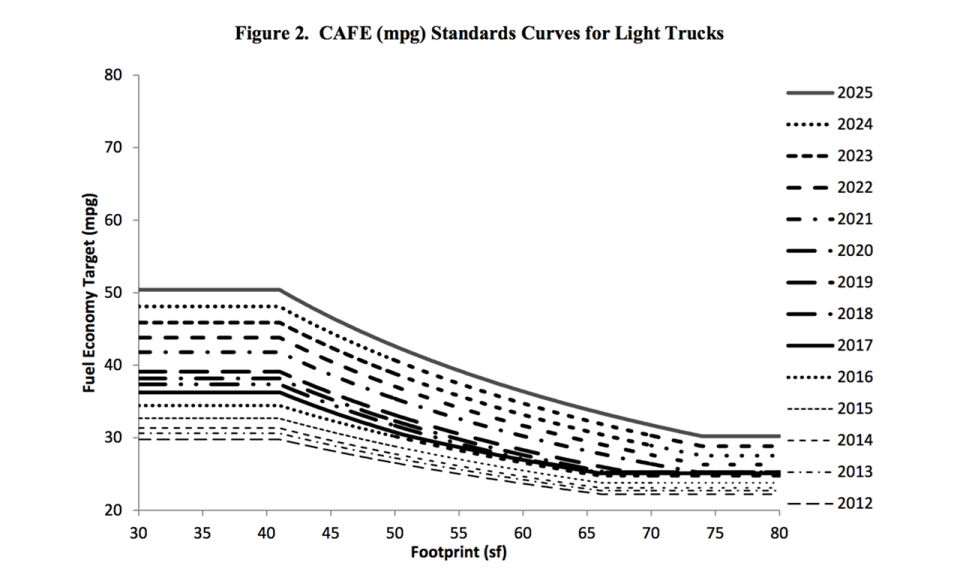The Ford F-150 Diesel Gets Better Highway MPG Than the Ford EcoSport

The EcoSport and the F-150 SuperCrew are polar opposites in the Ford Motor Company lineup. These vehicles span quite the difference: thousands of pounds of curb weight, towing, and payload capability. And yet, in their most fuel-efficient forms, the fuel-economy difference between the two is small-shockingly so.
Ford says the F-150, when equipped with its new Power Stroke turbo-diesel 3.0-liter V-6, makes an EPA-estimated 22 mpg city, 30 highway (25 mpg combined) with rear-wheel drive-or 20 mpg city, 25 highway (22 mpg combined) with four- or all-wheel drive. The Ford EcoSport gets 27 mpg city, 29 mpg highway (28 mpg combined) with a tiny EcoBoost 1.0-liter inline-three driving the front wheels and 23 mpg city, 29 highway, and 25 mpg combined) with all-wheel drive and a 2.0-liter inline-four.
That’s right: The F-150 can get better highway mileage than a tiny three-cylinder mini-ute. The diesel engine is the key. Furthermore, the F-150’s Power Stroke provides two capabilities that Ford claims to be best in class even among diesels: a tow rating of 11,400 pounds and a payload rating of up to 2020 pounds. On the other hand, the EcoSport is rated to tow no more than 2000 pounds when properly equipped. Both can carry five adults, but nearly anyone would agree that the F-150 is the more comfortable of the two.
We recently drove both an EcoSport with the turbo three-cylinder and an F-150 with the Power Stroke diesel. Diesels tend to rev much lower than gas engines, but the 10-speed automatic transmission keeps the engine in its sweet spot to really make the most of the 250 horsepower and 440 lb-ft of torque. The Power Stroke F-150 isn’t scorching in terms of performance, as we pointed out in a first-drive review, but it’s smooth and quiet enough to be mistaken for a gasoline V-6. The three-banger EcoSport isn’t quick by any means, although the off-kilter snarl helps redeem the 10.4-second wait time to 60 mph, and the generally quick-reacting six-speed automatic transmission keeps the revs in the middle of the tach’s sweep, where the engine feels strongest. The EcoSport also rides and handles a lot better than its teetering-on-small-wheels appearance might suggest.
CAFE Math
The observation has some relevance to the news cycle and proposed changes to the federal clean-car standards enforced by the U.S. Environmental Protection Agency (EPA) and the corresponding Corporate Average Fuel Economy (CAFE) standards as administered by the National Highway Traffic Safety Administration (NHTSA). Since the standards were last fully revamped, for the 2012 model year, those targets were adjusted by a vehicle’s footprint-determined by track width and wheelbase. For instance, even with the shorter 5.5-foot box, a SuperCrew F-150 factors in with a footprint that occupies about 65 percent more area than the EcoSport, by the CAFE formula.
In short, the larger the vehicle, the lower the CAFE target; pickups-because of their typically longer wheelbases-take full advantage of the loophole. Given the pressure to price smaller vehicles low in the U.S. market, it could become increasingly difficult for automakers to have vehicles like the EcoSport in their lineups.
You Might Also Like



